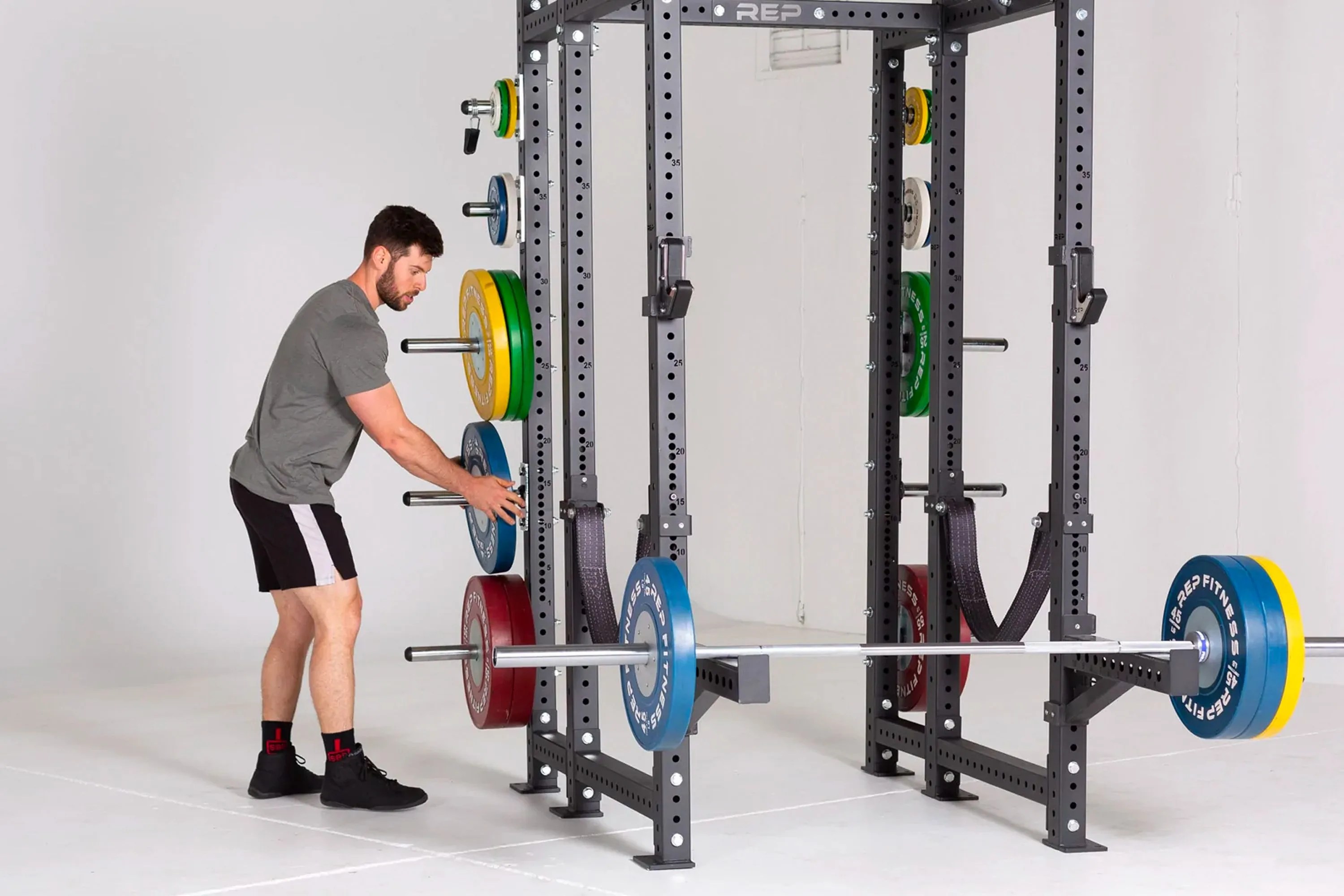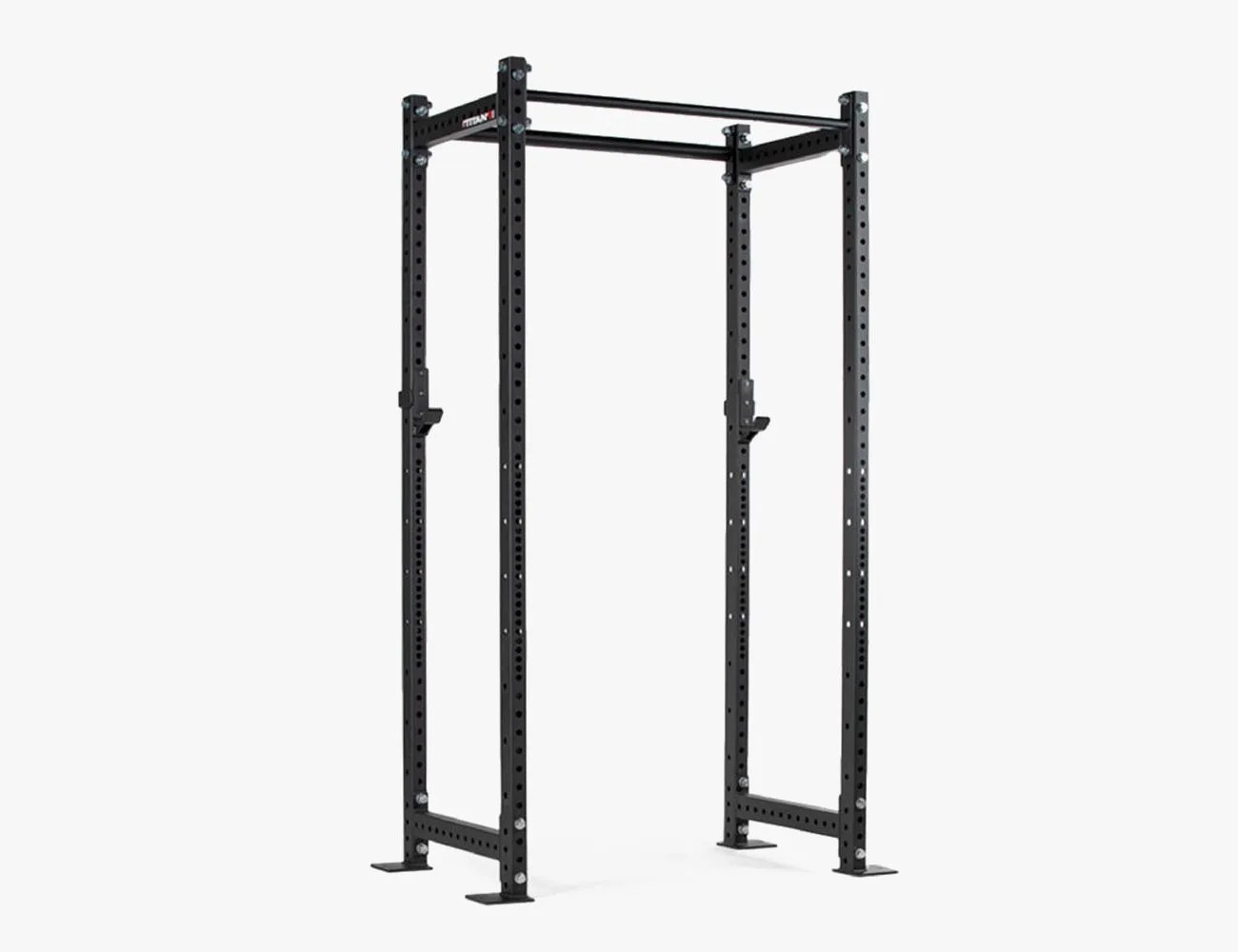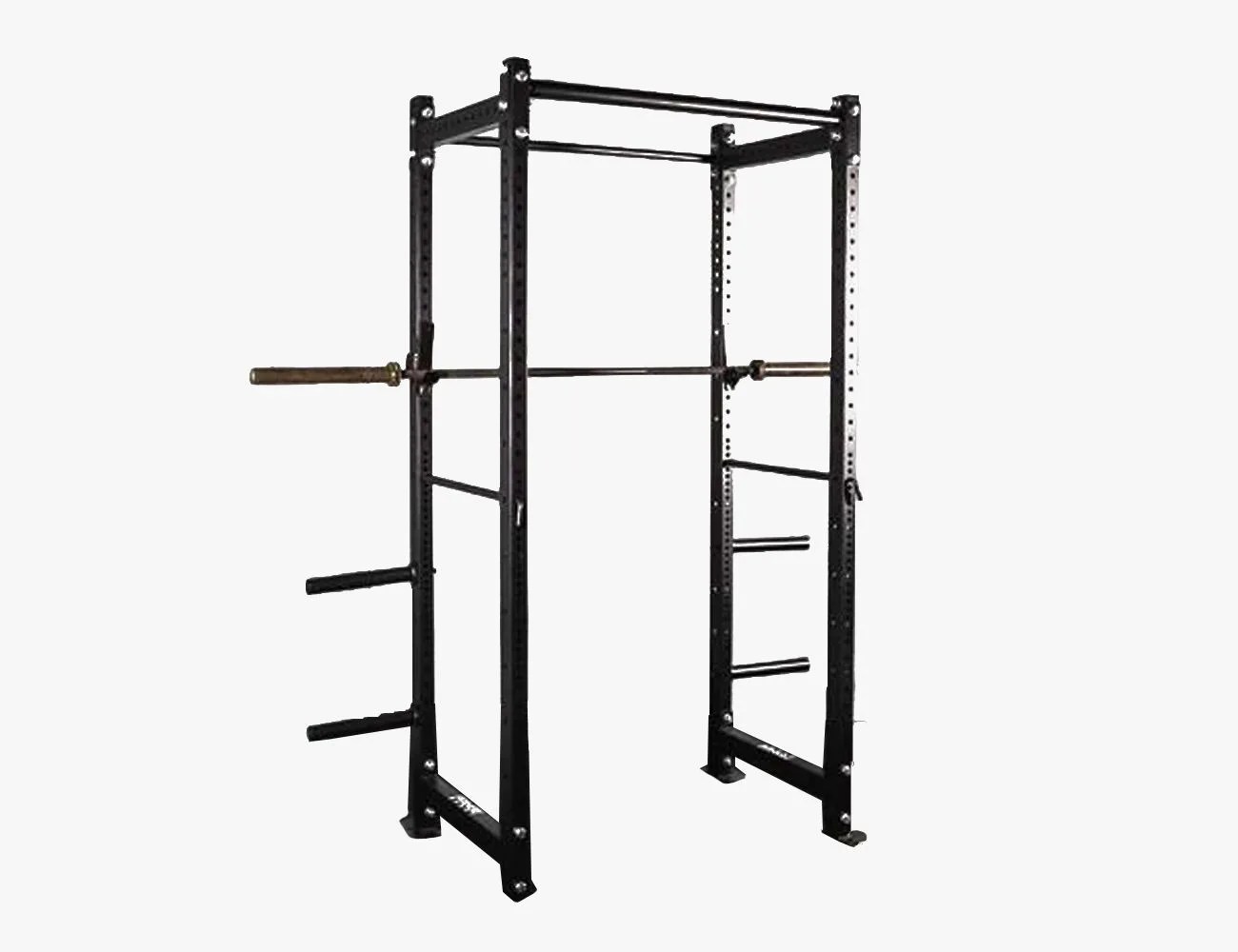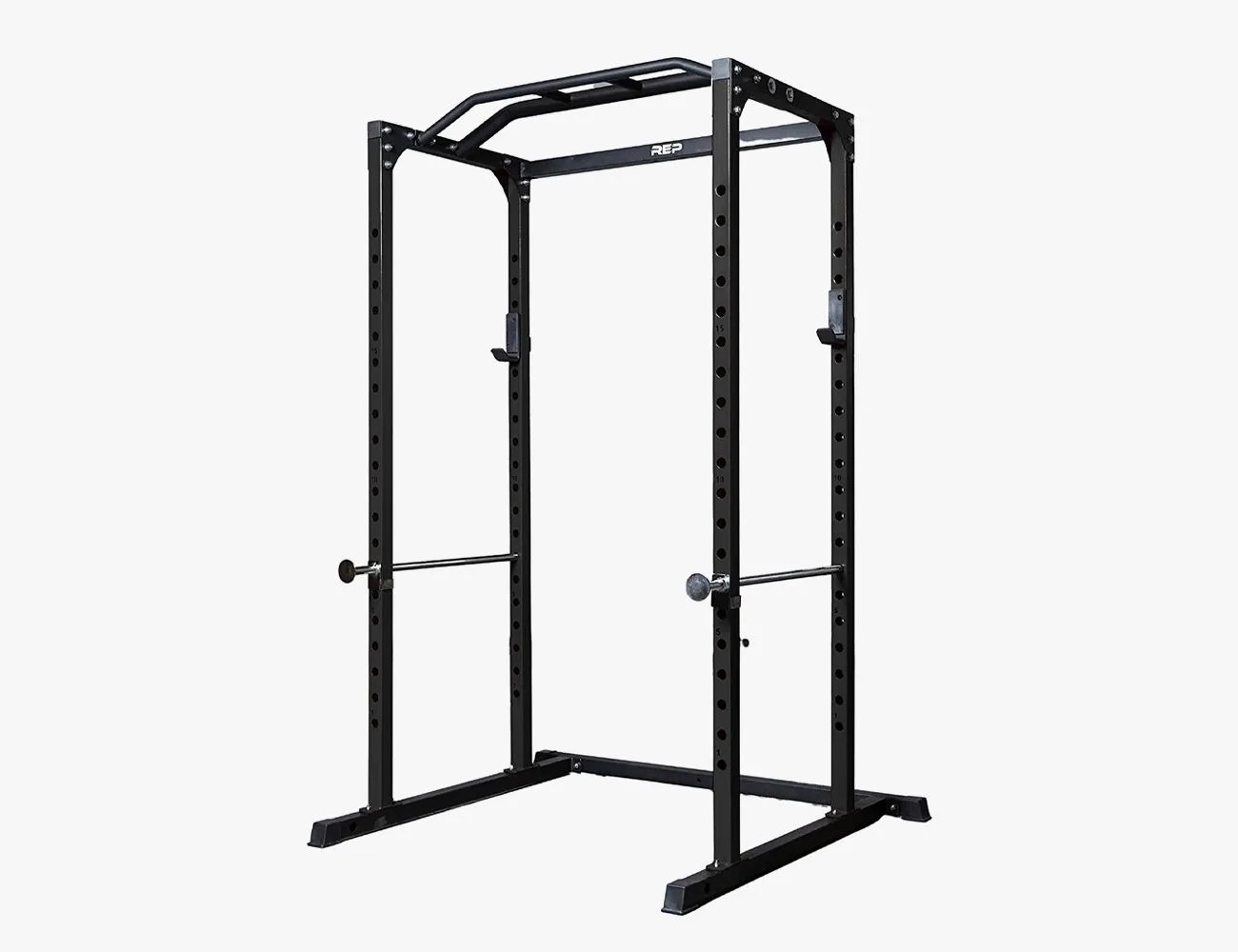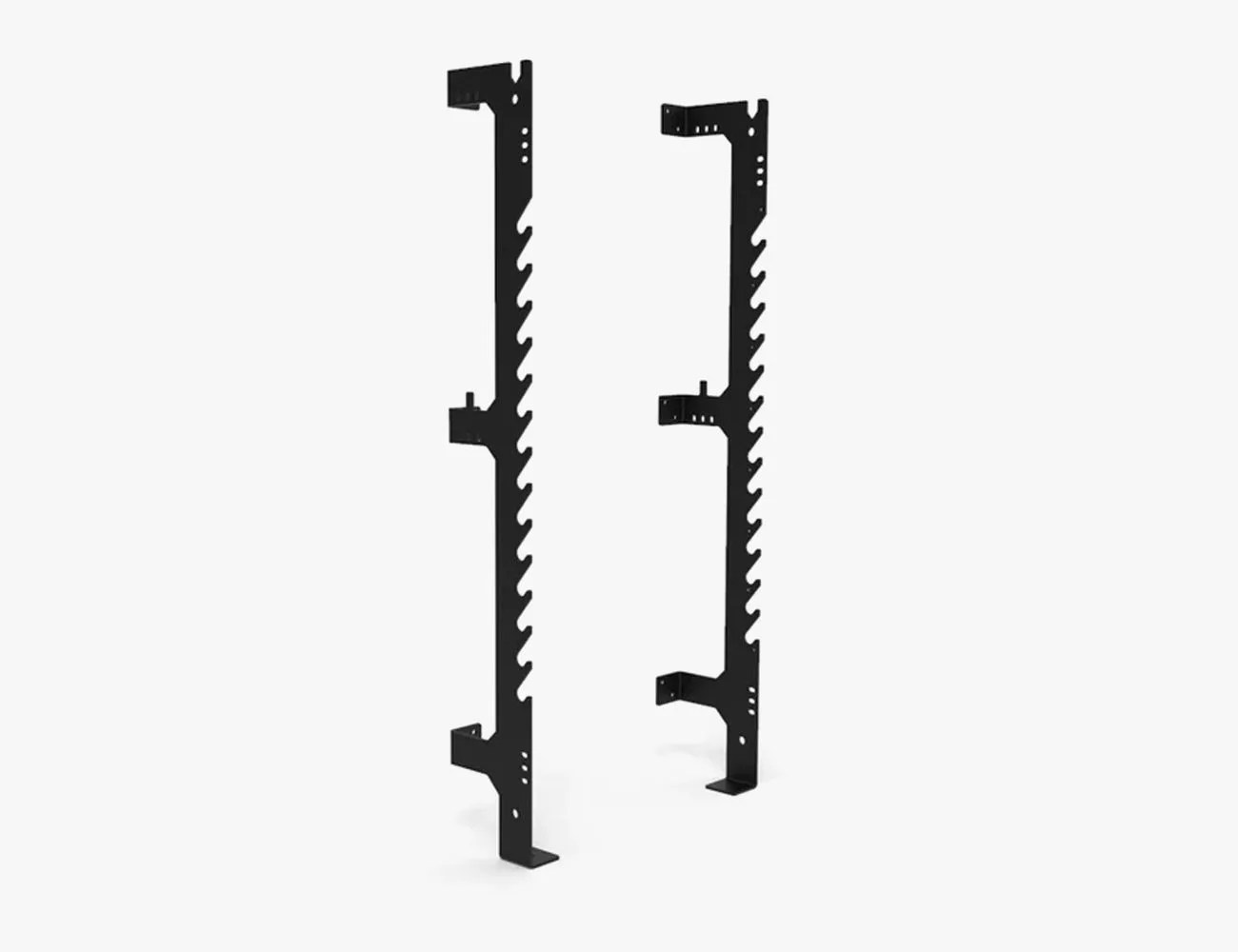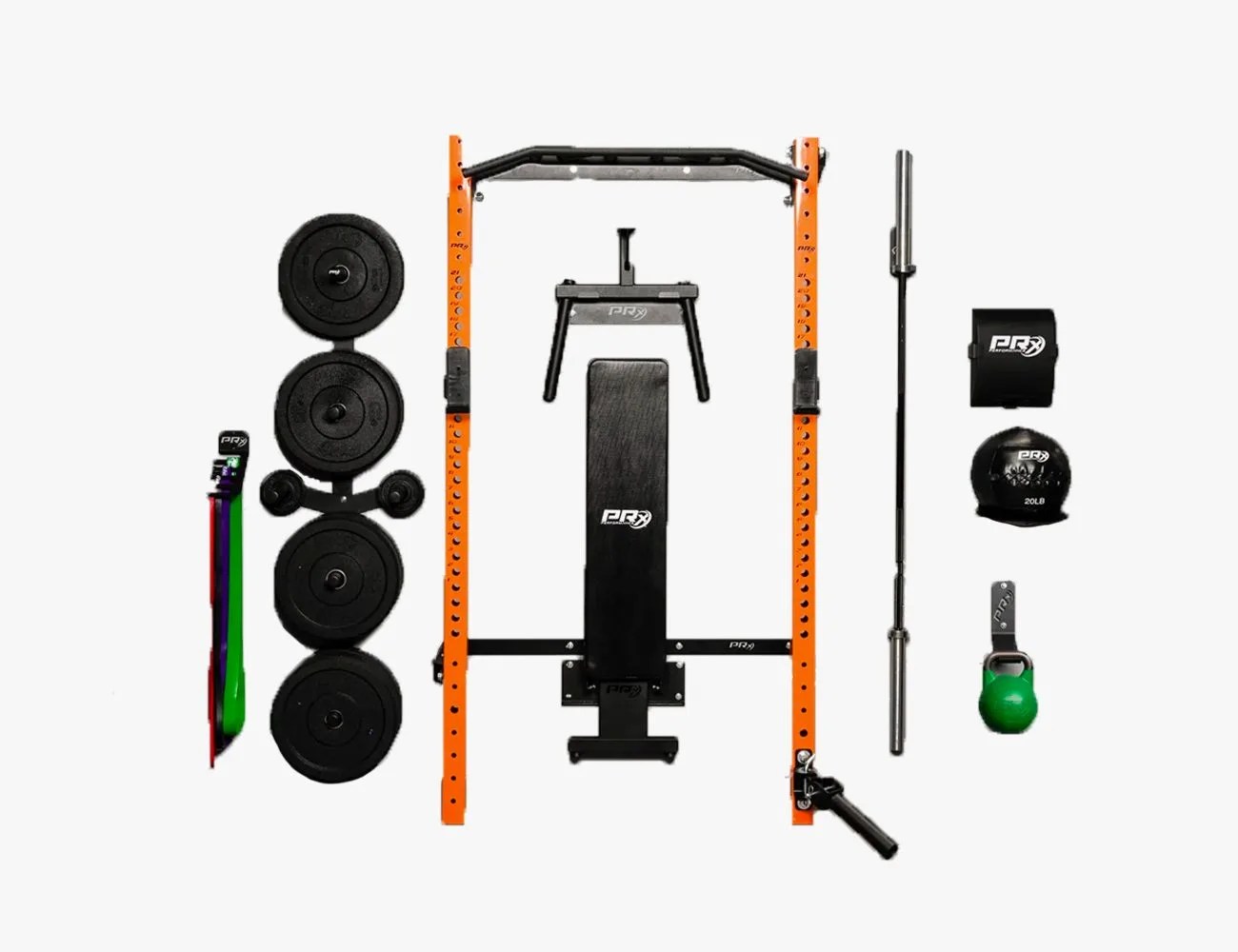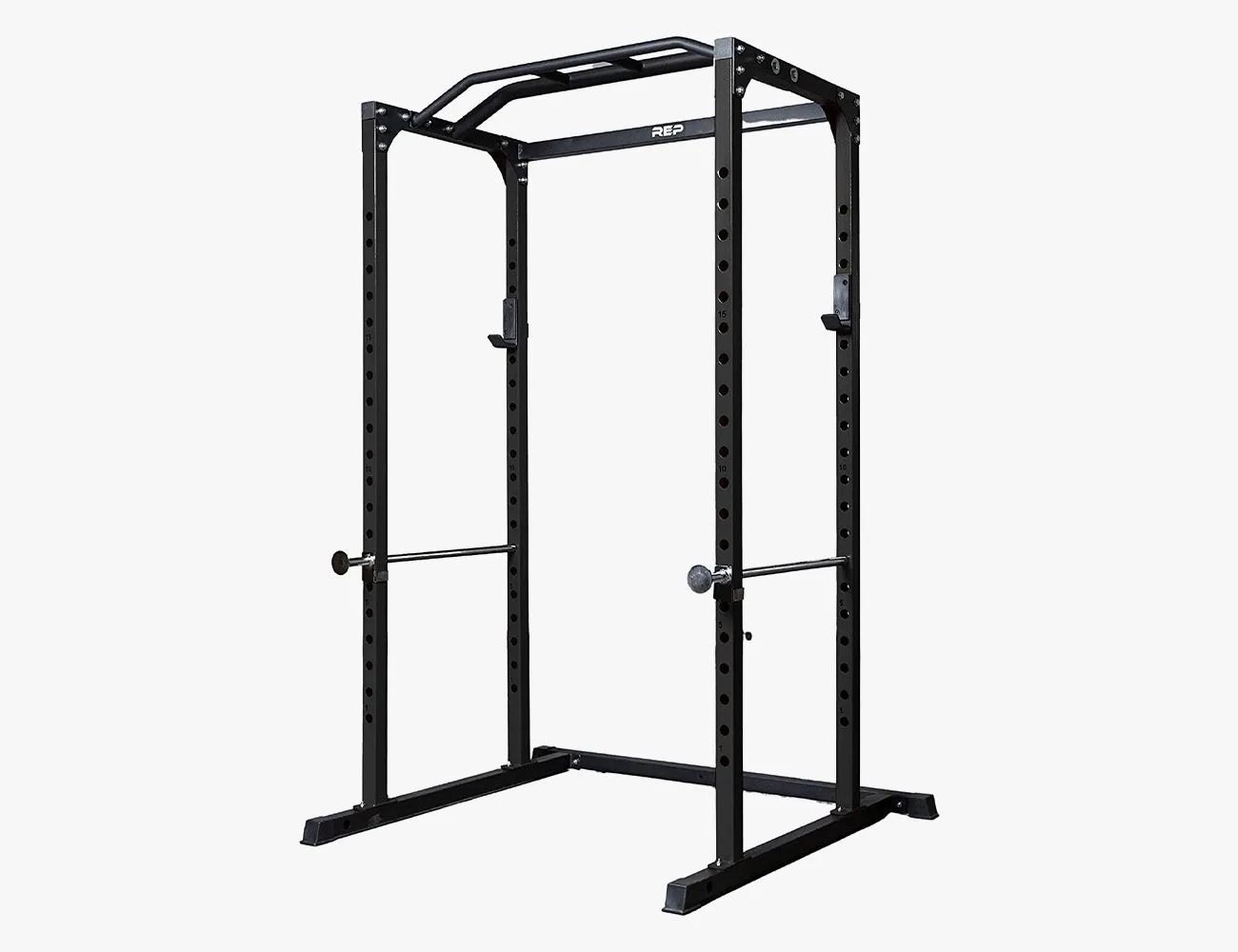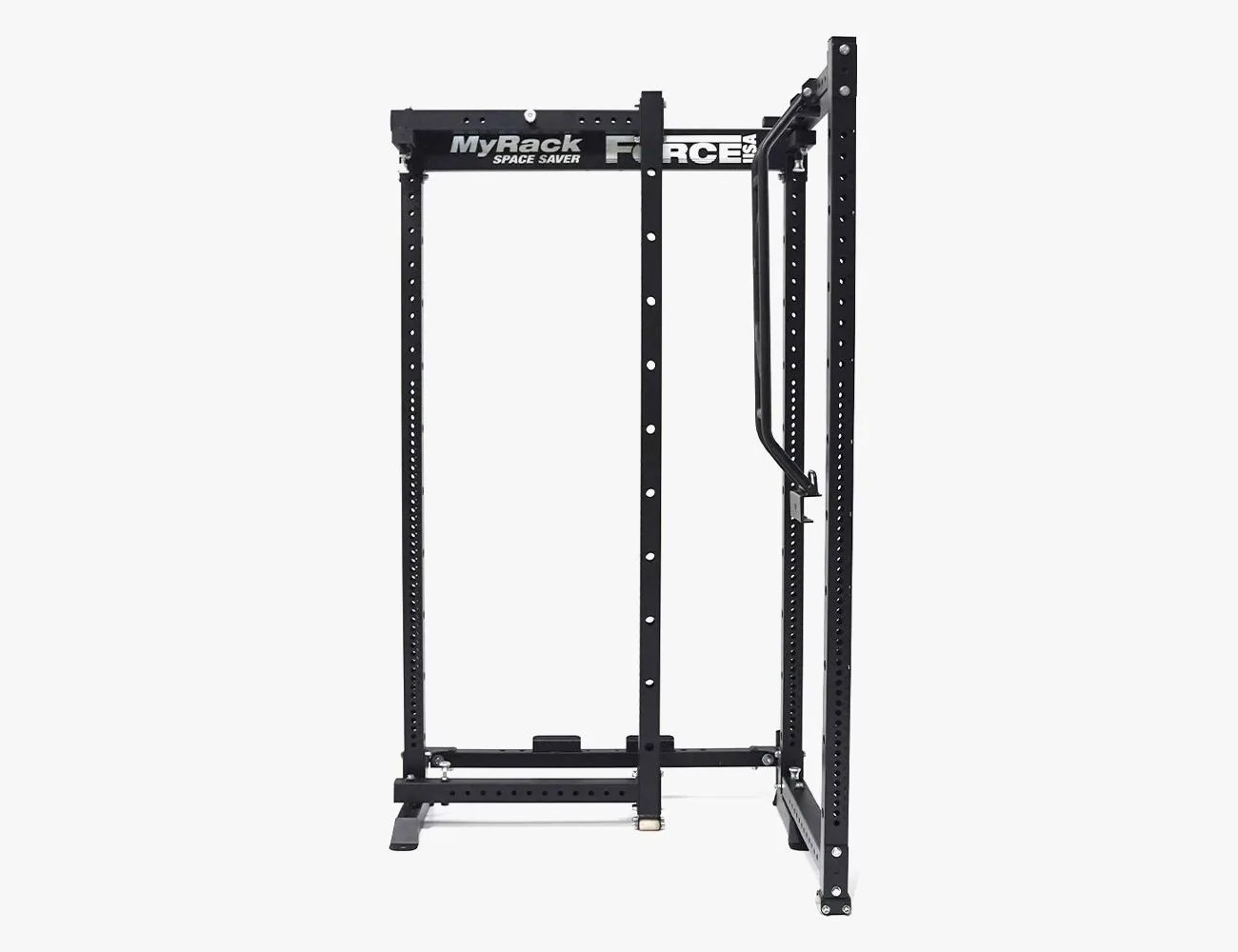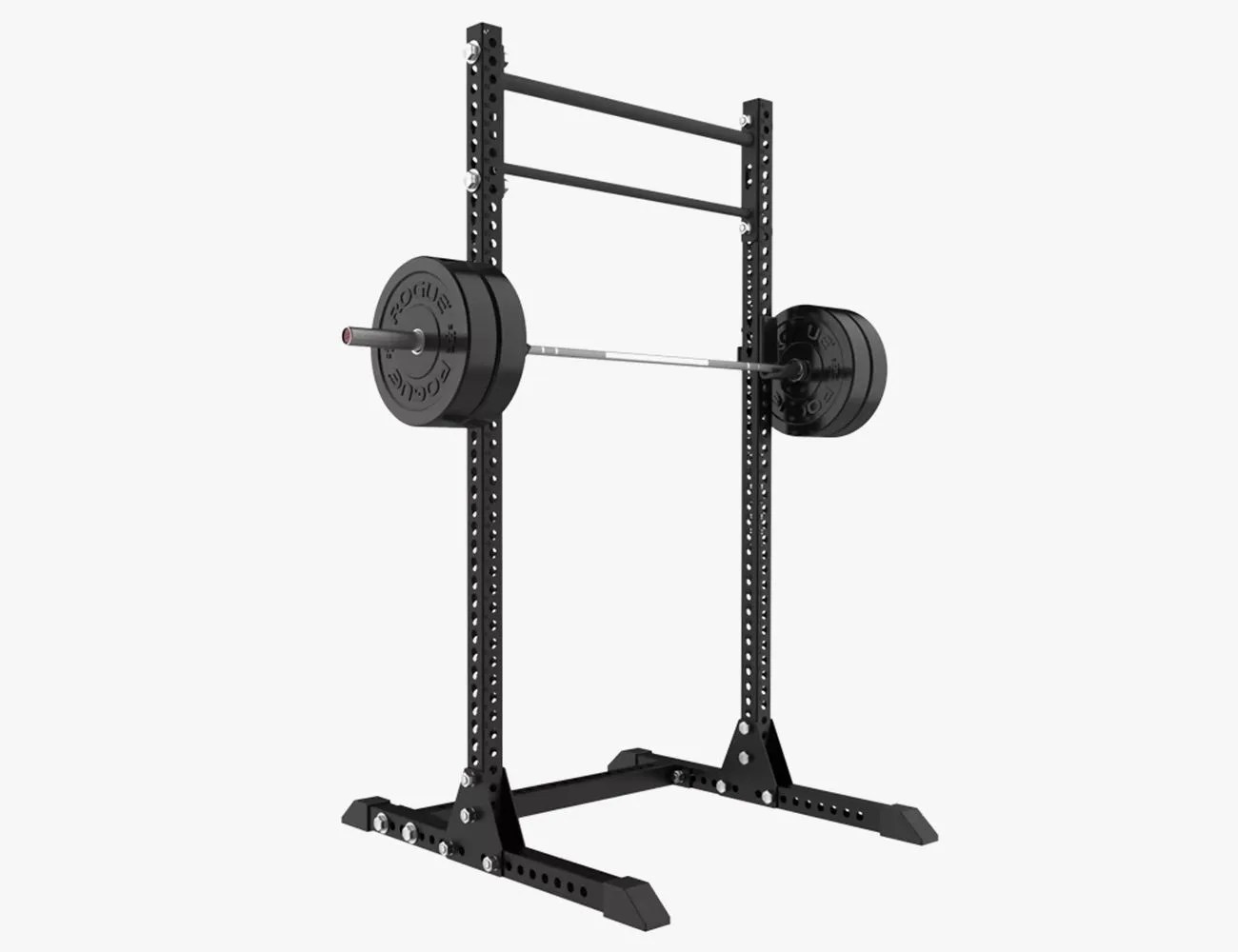The term “home gym” can mean a lot of things, but when you picture an at-home setup based in physical fitness, you probably conjure up images of a filled garage with weight plates, dumbbells and, of course, a power rack in some far-off corner. These metal structures are a staple in any strength training regimen, allowing for plenty of muscle-building modalities with the added safety and stability built right into their silhouette.
But as is the case with all home gym equipment, not every power rack is constructed the same. From the steel used in manufacturing to the included safety components and beyond, there are certain factors to consider before adding one of these gargantuan structures to your home gym setup.
Products in the Guide
-
Titan Fitness T-3 Series Power Rack
BEST OVERALL POWER RACK
Read more -
Fringe Sport Floor-Mounted Power Cage
BEST UPGRADE POWER RACK
Read more -
Rep Fitness PR-1100 Power Rack
BEST BUDGET POWER RACK
Read more -
Sorinex Off Grid Rack
BEST POWER RACK FOR MINIMALISTS
Read more -
PRx Performance Men’s Elite Home Gym Package
BEST ALL-IN-ONE POWER RACK
Read more -
Rep Fitness PR-4000 Power Rack
MOST CUSTOMIZABLE POWER RACK
Read more -
Force USA Folding MyRack Power Rack
BEST FOLDABLE POWER RACK
Read more -
Rogue SM-2 Monster Squat Stand 2.0
BEST SQUAT STAND
Read more
What to Look For in a Power Rack
Now, a power rack might seem like a pretty standard piece of fitness equipment at first glance, but much like barbells, there’s more to the structure than meets the eye. When looking at a power rack for your personal fitness needs, you should consider quality-based components like the structure’s makeup and mobility, as well as its potential for additional gear.
Construction
Most power racks will be constructed from steel, which provides exceptional rigidity and stability in comparison to other metals out there, but that steel can vary in terms of its durability. 11-gauge steel is the most durable due to its thicker composition than other, higher-gauged options. This can allow for higher weight capacities for weight plate storage and barbells at the racked position — i.e., your equipment is primed for more serious strength training sessions. If you’re concerned about how well your rack will hold up when placed under a heavy load, look for a rig that’s constructed from 11-gauge steel.
With that said, however, power racks constructed from 12-gauge, and even 14-gauge steel can typically withstand loads of 500 pounds or more, which should be more than enough for the typical fitness enthusiast. Power racks featuring this thinner steel can also be cheaper than their beefier competition, so it’s all about weighing which factors are most important to your training.
